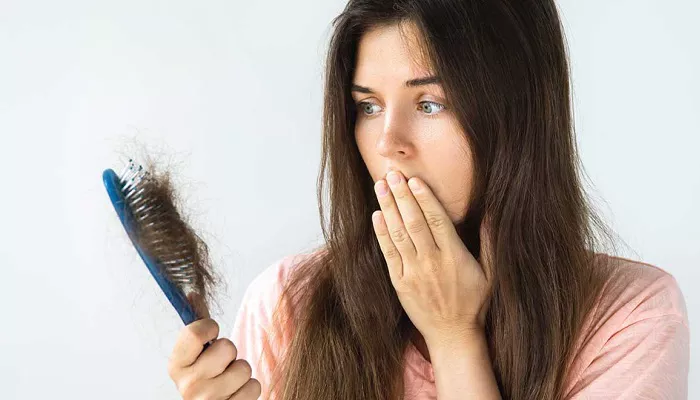As the monsoon season arrives across many regions, an increasing number of women report significant hair loss linked to the weather’s impact. Studies reveal that during this period, daily hair shedding can rise to 250 strands—about 30% higher than the usual 50–100 strands. Over 90% of individuals notice this seasonal increase, highlighting how environmental factors, scalp health, and psychological stress converge to worsen hair fall during monsoon.
How Humidity Affects Hair Health
The high humidity during monsoon causes hair shafts to absorb excess moisture, weakening their structure and making them prone to breakage. Rainwater exposure disturbs the scalp’s natural pH and washes away its protective oil layer, often introducing contaminants. This environment encourages bacterial and fungal growth, leading to scalp conditions like dandruff, tinea capitis, and seborrhoeic dermatitis. Additionally, a perpetually damp scalp clogs follicles, hindering healthy hair growth and triggering further hair loss.
The Role of Stress in Hair Fall
Beyond physical factors, psychological stress significantly contributes to monsoon hair loss. Stress accelerates hair follicles’ transition into the resting (telogen) phase, causing a condition called telogen effluvium. Chronic stress can worsen scalp inflammation linked to psoriasis or seborrheic eczema, amplifying hair fall. Elevated stress hormones such as cortisol disrupt the hair follicle’s growth cycle, further impairing hair regeneration.
Early Warning Signs to Monitor
Being attentive to changes can help manage hair loss before it worsens. Watch for:
Continuous hair shedding exceeding normal daily amounts
Noticeable thinning or widening hair parts
Bald patches or scalp tenderness
Flaking, itching, or irritation indicating infections
These symptoms may signal underlying issues such as alopecia areata or hormonal imbalances, which require professional evaluation.
Preventive Hair Care Steps and Lifestyle Tips
To protect hair health during monsoon, follow these essential hair care tips:
Use chemical-free shampoos with a balanced pH of 5.5, preferably containing natural ingredients like Thuja Occidentalis to reduce dandruff and hair fall.
Avoid shampoos with parabens, sulfates, or silicones, which can irritate the scalp.
Incorporate natural oils such as amla, walnut, neem, and coconut to promote scalp microcirculation and reduce inflammation. A weekly pre-wash scalp massage can strengthen hair roots and relieve stress.
Use products consistently, as stopping abruptly may cause hair fall to return.
While treatments like minoxidil exist, they can lead to side effects including scalp irritation and other health risks, making natural and sustainable care a preferable long-term strategy.
Nutrition for Stronger Hair
Diet plays a crucial role in maintaining hair vitality:
Biotin: Supports keratin production; found in eggs, almonds, oats, bananas, and legumes.
Iron: Prevents thinning by improving follicle oxygenation; abundant in spinach, lentils, chickpeas, and jaggery.
Omega-3 Fatty Acids: Nourish the scalp and reduce inflammation; sourced from walnuts, flaxseeds, soybeans, and fish like mackerel.
Zinc: Regulates scalp oil and reduces flakiness; present in pumpkin seeds, cashews, dairy, and whole grains.
Vitamin E: Enhances circulation and protects scalp cells; found in almonds, spinach, sunflower oil, and avocados.
Including these nutrients bolsters hair resilience and scalp health during humid months.
Dr. Akshay Batra, Trichologist and Managing Director at Dr Batra’s Healthcare, emphasizes combining hair care steps with a balanced diet and stress management for holistic monsoon hair health.
Related Topics:
- Top 9 Hair Oils to Boost Shine, Strength, and Scalp Health This Summer
- Top-Rated Biotin Duo Revives Thinning Hair for Just $25
- How a £35 Hair Serum Helped Regrow My Hairline


